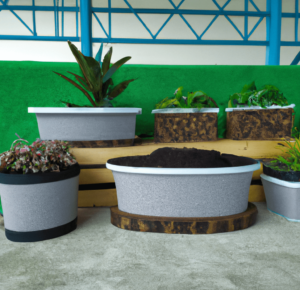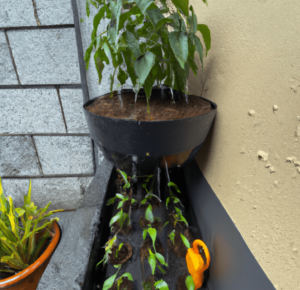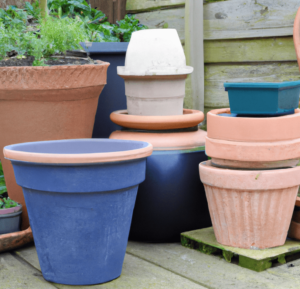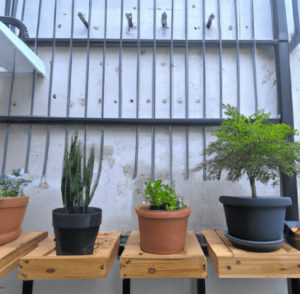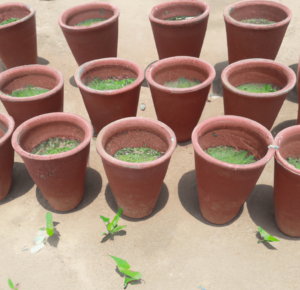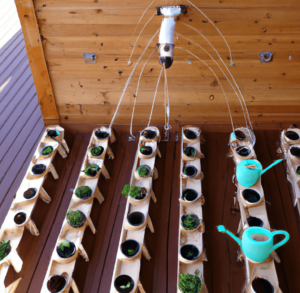With individuals becoming more interested in growing their own food and becoming more self-sufficient, gardening has grown in popularity recently. Herb gardening, which involves growing herbs for use in cooking, aromatherapy, and medicine, is among the most well-liked sorts of gardening. However, not everyone has the yard space or money to plant a herb garden. In situations like this, planters are useful. Herb gardens in planters are a wonderful way to reap the rewards of fresh herb cultivation without taking up a lot of room or time. The advantages of using planters for herb gardens will be covered in this article, along with some advice on how to get started.
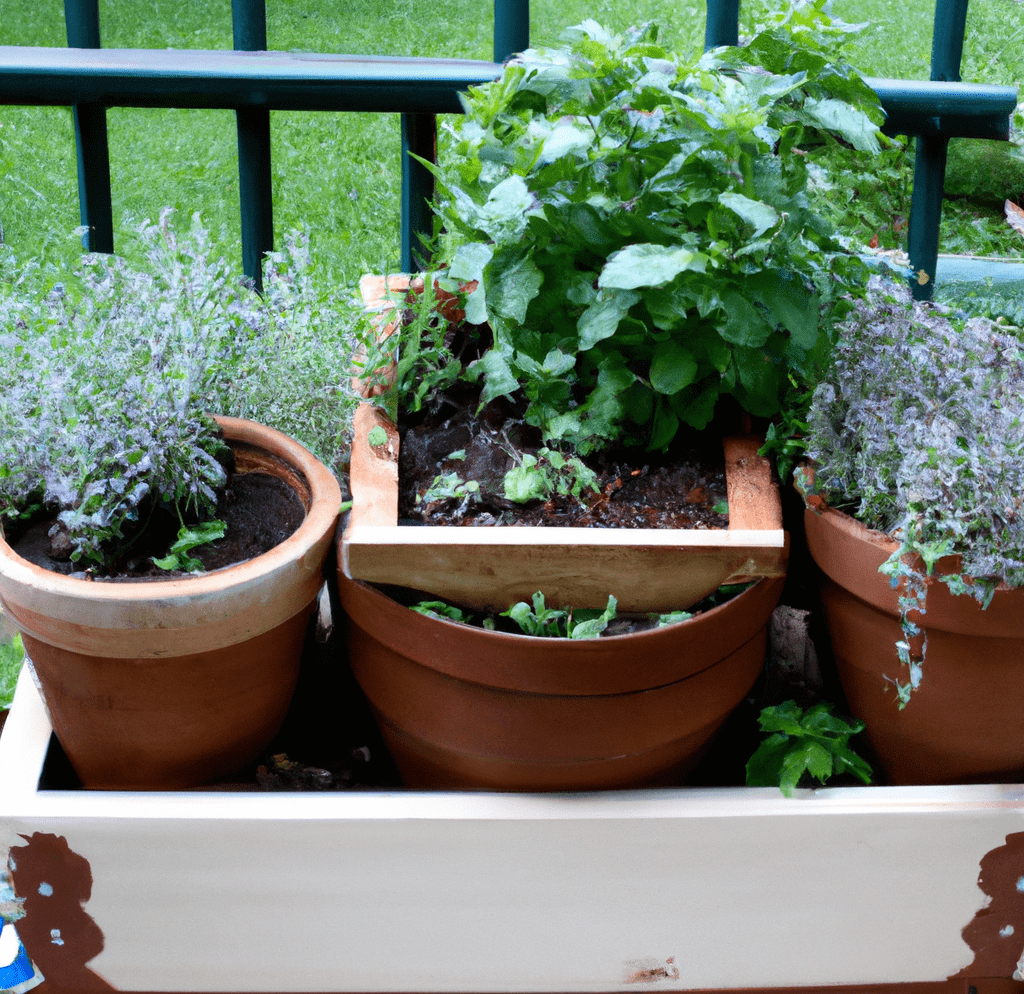
Advantages of Using Planters for Herb Gardens
Planters have become a popular choice for growing herbs because they offer several advantages over traditional herb gardens. Here are some of the benefits of using planters for your herb garden:
- Herbs with greater vigor and health: Growing herbs in planters gives you more control over the nutrients and soil quality your plants receive. Additionally, you have control over how much water your plants get, which can help avoid overwatering and root rot.
- Simple to maintain: Ground-based herb gardens can be challenging to maintain, especially if you have a small yard. Your herbs can be moved around and set up whatever you choose with the help of planters.
- Space-saving: Planters are ideal for balconies and tiny spaces. A variety of herbs can be grown in a short space, making plant management and harvesting simpler.
- Do not weed: You won’t have to be concerned about weeds encroaching on your herb garden if you use a planter. You may use that time and effort to complete other gardening jobs.
- Hand accessibility: Planters can be positioned at an accessible height so that you can tend to your herbs without bending down or putting undue strain on your back.
All things considered, growing your own herbs in planters is a great method to have easy access to fresh, nutritious herbs.
Discuss the Benefits of Using Planters for Herb Gardens, Including the Ability To Control Soil Quality, the Ability To Move the Garden to Different Locations, and the Ability To Extend the Growing Season.
For gardeners who want to develop a herb garden in a small area, planters are a great solution. The use of planters for herb gardens has a number of advantages, including the flexibility to manage the soil’s quality, relocate the garden to new sites, and lengthen the growing season. We will go into more detail about these advantages in this section.
- Regulating soil quality
Controlling the soil quality is one of the most important advantages of utilizing planters for herb gardens. You can choose the sort of soil you want to use for your herbs by using planters. This is significant since different herbs require different types of soil. For instance, whereas basil prefers damp soil, rosemary prefers soil that drains well. By using planters, you can guarantee that each herb receives the right kind of soil for growth.
- Change the location of the garden
The flexibility of moving the garden to different sites is another advantage of using planters for herb gardens. If you live in a small space or wish to relocate the herbs to a position with more sunlight or shade, this is extremely helpful. With planters, moving the garden to a new area is simple and won’t disrupt the roots of the plants.
- Grow Season Should Be Extended
Additionally, planters give you the option of extending the growing season. During the winter, you can bring the pots inside or put them in a greenhouse. This enables you to keep growing your herbs even when the weather turns cold. With planters, you can better regulate the growing environment, which can result in a longer growing season.
To sum up, using planters for herb gardens has a number of advantages, including the flexibility to manage the soil’s quality, relocate the garden to other areas, and lengthen the growth season. Consider using planters for your garden if you want to establish a herb garden but have a small yard or like to have greater control over the growth environment.
Provide Examples of How Planters Can Be Used in Different Types of Gardens, Such As Indoor Gardens, Small Gardens, and Balcony Gardens.
Planters are a versatile and practical option for growing herbs and plants in a variety of different garden types. They are especially useful in small spaces and can help maximize the use of available space. In this article, we have discussed the benefits of using planters for herb gardens. In this section, we will provide examples of how planters can be used in different types of gardens, including indoor gardens, small gardens, and balcony gardens.
- Indoor Gardens: Indoor gardens are a great way to bring some greenery into your home, and using planters is an excellent way to grow herbs and plants in an indoor garden. You can place planters on a windowsill, on a shelf, or even hang them from the ceiling. This makes it easy to grow herbs in your kitchen, which is especially useful for cooks who want to have fresh herbs on hand for cooking.
- Small Gardens: Small gardens can benefit greatly from the use of planters, as they help to maximize the use of available space. In a small garden, you can use planters to grow herbs and plants in areas that may not be suitable for planting directly into the ground. For example, you can place planters on a patio or a small patch of grass to create a beautiful garden space.
- Balcony Gardens: Balcony gardens are becoming increasingly popular, as more people are living in apartments and condos. Using planters is an excellent way to create a garden on a balcony, as they can be easily moved around and are space-efficient. You can use planters to grow herbs, vegetables, and flowers, and they can be placed on the floor, on shelves, or hung from the balcony railing
In conclusion, planters are a versatile and practical option for growing herbs and plants in a variety of different garden types. They are especially useful in indoor gardens, small gardens, and balcony gardens. By using planters, you can maximize the use of available space and create a beautiful garden area, no matter how small your outdoor or indoor space may be.
Types of Planters for Herb Gardens
Planters are a common choice for herb gardening and offer a number of advantages for growing herbs and other plants. They come in a variety of designs and materials, are flexible, and are portable. The various planter types that can be used for herb gardens and their advantages for gardening and growing herbs will be covered in this section.
- Terracotta Planters: A traditional choice for herb gardens are terracotta planters. They have a natural, earthy appearance that goes well with any garden decor and are constructed from baked clay. These planters come in a variety of sizes and shapes, and because they have great drainage, they are perfect for growing herbs. Additionally, they keep the soil from heating up and preventing the herbs from getting soggy.
- Self-Watering Planters: For individuals who are new to gardening or lead busy lives, self-watering planters are a great solution. These planters contain an internal reservoir that collects water and releases it when needed, helping to maintain a constant moisture level in the soil. They are also ideal for herbs like basil and mint that need to be watered often.
- Hanging Planters: Hanging planters are perfect for little herb gardens. A lovely display of herbs may be made with these planters that can be hung from a hook, rail, or bracket. They are a great option for gardeners with limited mobility because they make it simple to water and collect the herbs.
- Vertical Planters: For herb gardens with little floor area, vertical planters are a popular choice. These planters let you grow herbs in a compact space and may be installed on a wall, fence, or balcony railing. Additionally, they produce a stunning garden display that is sure to dazzle.
In conclusion, there are many different kinds of planters available for growing herbs, each with specific advantages. You may design a stunning herb garden that will wow, whether you go with terracotta planters, self-watering planters, hanging planters, or vertical planters. Planters are perfect for growing in any setting, whether indoors or outdoors, because they offer flexibility and portability.
Describe the Different Types of Planters That Are Available for Herb Gardens, Such As Container Gardens, Raised Beds, and Window Boxes.
There are numerous planter kinds that can be used to create a herb garden. You have a range of alternatives, including window boxes, raised beds, and container gardens, depending on your need. The many planters that are available for herb gardens will be discussed in this part, along with their advantages for planting and growing herbs.
- Herb gardening in containers is a popular alternative, particularly for individuals who lack access to the ground or have a small amount of outside space. Container gardens can be positioned on patios, balconies, or windowsills and can be created from a number of materials, such as plastic, clay, or metal. They may be used to grow a variety of herbs and are adaptable and portable.
- Another common choice for herb gardens is raised beds, particularly for people with restricted mobility or those who wish to avoid bending and kneeling on the ground. Soil is placed inside raised beds, which can be built of wood, metal, or concrete blocks. They offer great drainage for herbs and may be positioned on any flat surface. Raised beds can be filled with soil that is specifically made for growing herbs, and they are an excellent way to stop soil-borne infections.
- Window Boxes: For individuals who prefer to grow herbs indoors, window boxes are a fantastic option for herb planting. These planters can be hung from brackets or fastened to windowsills and are often constructed of wood, metal, or plastic. They can simply be moved indoors or outdoors depending on the season and are ideal for growing herbs that need a lot of sunlight, like basil or rosemary.
In conclusion, there are numerous planter varieties that are suitable for herb gardens, each with specific advantages. You can make a lovely herb garden that gives you fresh herbs for cooking and aromatherapy, whether you select container gardens, raised beds, or window boxes. Planters offer flexibility, making them perfect for gardening in any area, whether indoors or outdoors. They also make a great alternative for people with restricted mobility or no access to the ground.
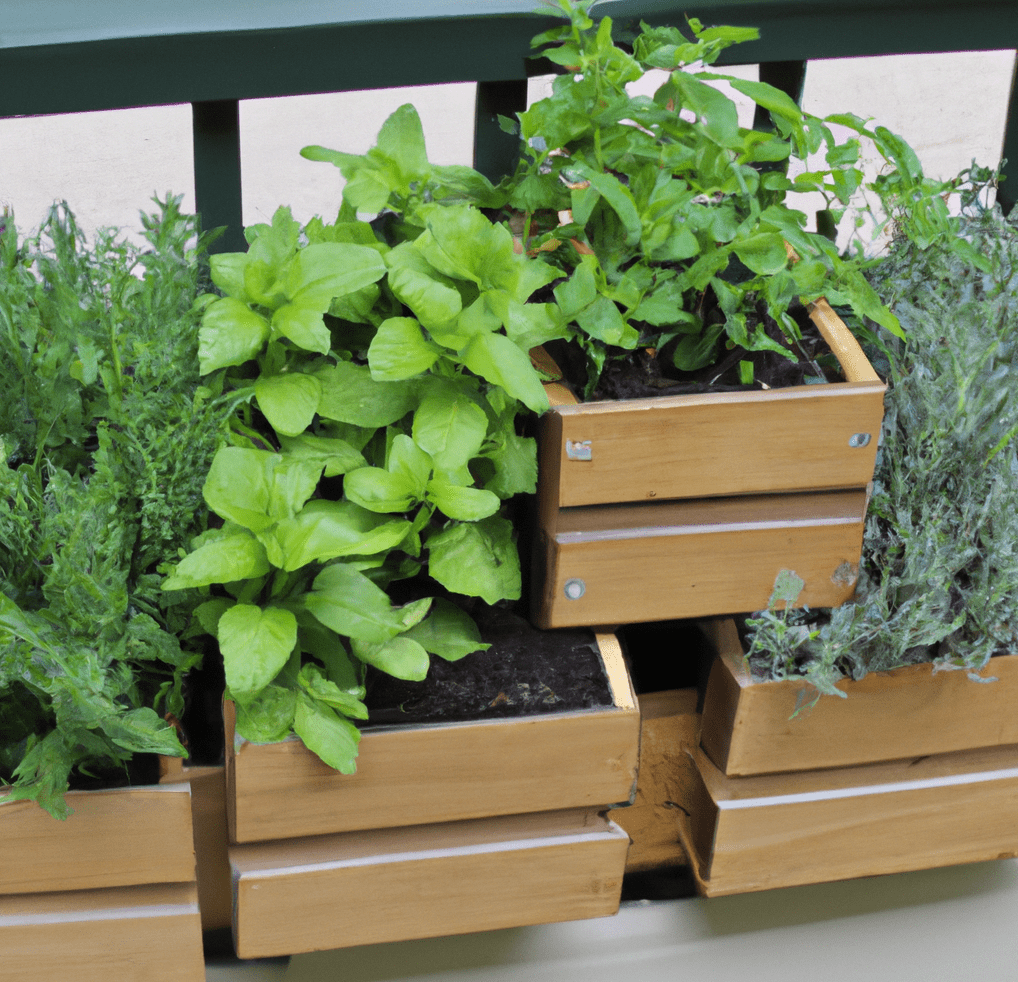
Provide Information on the Pros and Cons of Each Type, As Well as the Types of Herbs That Work Best in Them.
When it comes to selecting the type of planter for your herb garden, it is essential to consider the benefits and drawbacks of each option. Each type of planter has its unique characteristics, and some herbs may perform better in certain types of planters. In this section, we will provide information on the pros and cons of each type of planter, as well as the types of herbs that work best in them.
- Container Gardens
Pros: Container gardens are portable and versatile, making them an excellent option for gardening in small spaces. They are available in various sizes and materials, and they provide excellent drainage for herbs.
Cons: Container gardens can dry out quickly, requiring frequent watering. The soil in container gardens can also become compacted, which can limit the growth of herbs.
Herbs that work best: Herbs that work well in container gardens include chives, basil, parsley, cilantro, and thyme.
- Raised Beds
Pros: Raised beds provide excellent drainage and are an ideal option for gardeners with limited mobility. They also provide good soil depth for herb roots to grow, and they can be customized to fit any size or shape.
Cons: Raised beds can be expensive to construct, and they require a significant amount of soil to fill. They can also be susceptible to soil-borne diseases if proper care is not taken.
Herbs that work best: Herbs that work well in raised beds include sage, rosemary, lavender, oregano, and mint.
- Window Boxes
Pros: Window boxes are a perfect option for gardening in small spaces and for growing herbs indoors. They are also an attractive addition to any home decor.
Cons: Window boxes can be prone to drying out, requiring frequent watering. They may also be limited in the types of herbs that can be grown due to their size.
Herbs that work best: Herbs that work well in window boxes include thyme, basil, mint, parsley, and cilantro.
In conclusion, the type of planter you choose for your herb garden depends on your individual needs and preferences. Each type of planter has its unique benefits and drawbacks, and certain herbs may perform better in specific types of planters. By considering the pros and cons of each type of planter and the herbs that work best in them, you can create a successful and thriving herb garden.
Designing an Herb Garden Using Planters
Using planters to create a herb garden can be a productive and enjoyable job. You can construct a lovely and useful garden that provides fresh herbs for your cooking requirements with a little forethought and work. We will offer advice on designing a herb garden using planters in this section, including how to pick the best herbs for your area, how to organize the planters, and how to fit them into the overall design of the space.
- Select the Correct Herbs
Prior to planting, it’s crucial to pick the appropriate herbs for your area. Think about the area’s exposure to sunlight, the temperature and humidity, and the space you have for your garden. While some herbs prefer little shade, others need the full light. Additionally, some herbs need a larger growing area than others.
- Set up the planters.
It’s time to organize your planters after choosing your herbs. When deciding where to position your pots, take into account both the height and width of each plant. To add depth and aesthetic interest, place taller plants in the back and shorter plants in the front. To create a more coordinated appearance, you can also put together similar plants.
- Include them in the space’s overall aesthetic
It’s crucial to take the space’s overall appearance into account when planning your herb garden in pots. Select planters that go well with your home’s or your outdoor space’s design and color palette. To improve the overall appearance of your herb garden, you can also use beautiful stones, statues, or other garden accents.
Creating a herb garden out of planters can be a creative and enjoyable method to cultivate fresh herbs for your cooking requirements. You may build a lovely and useful garden that you can enjoy for years by picking the correct herbs, arranging the planters in an aesthetically pleasing fashion, and incorporating them into the overall aesthetic of the room.
Bottom Line: The Benefits of Using Planters for Herb Gardens
Summarize the Key Points Discussed in the Article and Reiterate the Benefits of Using Planters for Herb Gardens.
Additional Resources
Provide a list of additional resources for readers who want to learn more about using planters for herb gardens, such


